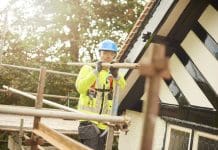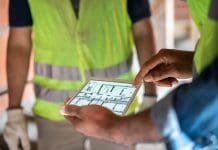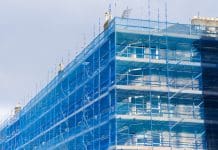Andrew Leslie, Technical and Standards Manager at The Association for Project Safety provides clear guidelines as to who can be the Principal Designer to satisfy the CDM2015 Regulations…
The amount of incorrect information regarding the Construction (Design & Management) Regulations 2015 (CDM2015) in circulation is really quite worrying. The regulation’s precise wording is the law. There is no opportunity for interpretation of what you think they are trying to say.
One of the areas where there seems to be a degree of misunderstanding is around the issue of who can be a Principal Designer (PD). Quite a few commentators say that the former CDM coordinator cannot be the PD but that is incorrect if the former CDM coordinator is also a designer as indeed a large number are. In fact those former CDMCs who are also designers are extremely well placed to be a PD.
In a perfect world, the best person or organisation to be the PD is the lead designer on a project. But for them to be able to take on that role they need to have sufficient skills, knowledge and experience to be in control of the pre-construction phase with regard to health and safety as well as the design related technical ability and skills.
A PD must be a designer – this is important as to discharge the PD role you need to be up-to-speed with design, design issues and the development that the construction industry has undergone over recent years.
What is also clear from the regulations, and has been confirmed by the HSE, is that:
The Principle Designer role does not have to be undertaken by a designer working on the project in a technical capacity. Yes, this is the ideal scenario but it is not law.
The PD can employ others to assist them to discharge their duties but by doing so they cannot rid themselves of their legal liabilities under the CDM Regulations. The problem faced by the industry is two-fold.
Firstly, the CDM2015 Regulations are a subset of the Health and Safety at Work etc Act and, as such, are regulations about health and safety only, not whether or not an architect or other designer knows how to design a building technically.
Secondly, there are still numerous architects, building surveyors and other designers who currently know little about CDM and design risk management and are concerned by “messages” from various sources that they must be the PD on their projects. This is not true for all projects. On domestic projects they may well be the designer “in control of the preconstruction phase” and therefore almost certainly will be the PD. If the client does not appoint them they will be PD by default. On commercial projects that is not the case. A commercial client must appoint a capable design practice as PD in writing. It is not necessarily the case that the design practice is a designer on the project. If the client does not appoint a PD, then the client becomes the PD by default.
It is very important to understand that the requirement for the Principle Designer to have health and safety skills, knowledge and experience is in proportion to the nature, size and complexity of the project in question. For most domestic projects, an architect with some design risk management training should be capable of undertaking the PD role without assistance. They should not require the appointment of a sub-consultant adviser, unless the project happens to be a something like a million pound mansion in Surrey with a basement swimming pool!
For commercial and larger projects the issues around design and construction health and safety tend to become more complex and in those situations it would be prudent for the person or organisation being offered the Principle Designer role to consider whether or not they have the necessary health and safety skills, knowledge and ability to plan, manage and monitor the pre-construction health and safety and then coordinate the matters arising from this process. In these situations it may be prudent for the designer, if they don’t have these skills within their organisation, to consider employing someone with the right capability to assist them with the PD duties. An alternative, slightly longer term, approach would be for the designer to undertake training on how to discharge the PD role.
Clients should be very wary of asking designers to undertake the PD role without checking that they do have the right skills, knowledge and experience as CDM2015 places a strict duty on the client to ensure that both the PD and Principal Contractor comply with certain of their duties. In addition, the success of the project in terms of health and safety relies heavily on how well the pre-construction phase is planned and managed and as we have learnt over the last 20 years, good health and safety is good for business.
So how can a client determine if the person or organisation they are appointing is suitably capable to discharge the PD role? The client needs to do some ‘digging around’ to find out firstly if the organisation they wish to employ as PD are a designer. Secondly the client should establish what training the designer has had regarding health and safety, and in particular the coordination of pre-construction health and safety, and then look at their experience of similar projects.
Essentially, the PD role can be undertaken by any person or organisation that undertakes design and has the right mix of health and safety skills, knowledge and experience. This could be an individual, a design practice, a local authority with a technical department or a client.
All of this will, no doubt, come out in the wash over the coming months and years. ■
. . . . . . . . . . . . . . . . . . . . . . . . . . . . . . . . . . . . . . . . . . . . . . .
Andrew Leslie
Technical and Standards Manager
The Association for Project Safety
Tel: 0131 442 6600
info@aps.org.uk













![[VIDEO]What to expect when you’re inspecting: Using DorTrak for fire door inspections](https://www.pbctoday.co.uk/news/wp-content/uploads/2025/02/maxresdefault-218x150.jpg)